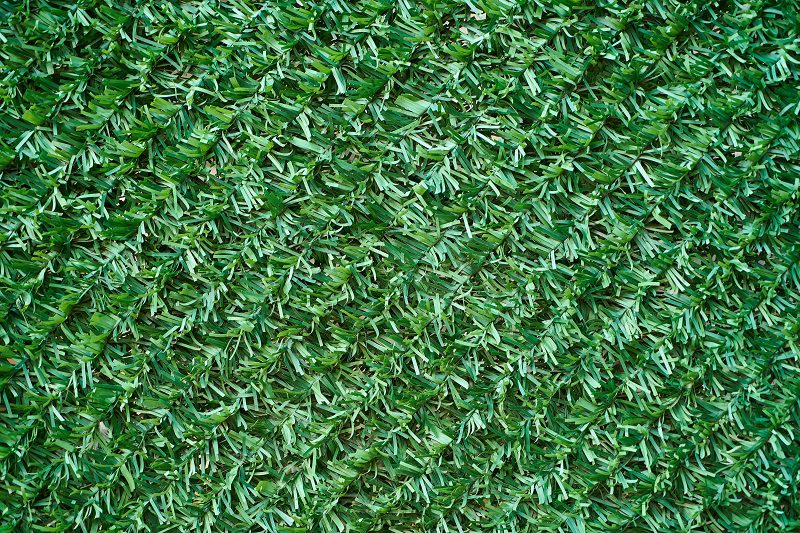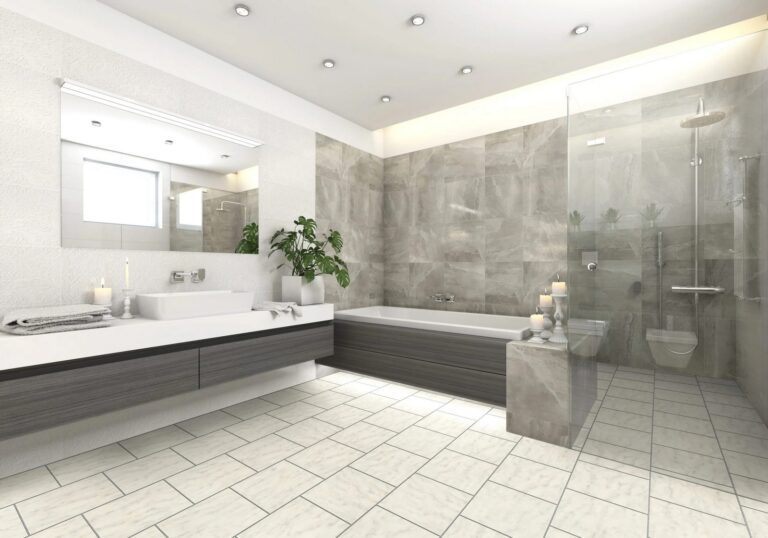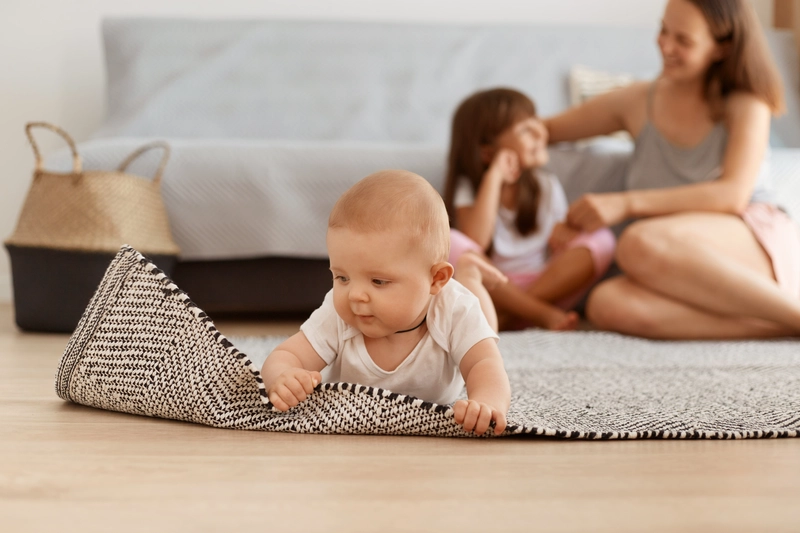Are you considering switching to artificial grass but not sure if it’s the right choice? From the different types available and the artificial grass pros and cons, let’s explore everything you need to know about artificial grass.
Discover the benefits of low maintenance, water conservation, and safety for your family and pets. Dive into artificial grass pros and cons below!
Different Types Of Artificial Grass
Before we dive into artificial grass pros and cons, there are several types of artificial grass available, each made from different materials to suit specific applications. Common varieties include nylon turf, polyethylene grass, polypropylene surfaces, PET grass, and rubber-infused turf.
a. Nylon
Nylon artificial grass is known for its resilience and ability to spring back into shape after heavy use. It is a popular choice for high-traffic areas and sports fields due to its durability and resistance to wear and tear.
One of the key attributes of nylon artificial grass is its remarkable durability, designed to withstand the rigours of continuous use without losing its aesthetic appeal. The material’s innate toughness makes it an ideal solution for applications in demanding environments, such as bustling high-traffic areas and heavily used sports fields.
Furthermore, its exceptional resilience allows it to bounce back effortlessly even after enduring extensive foot traffic and various types of physical activities. Sports enthusiasts and facility managers often favour nylon artificial grass for its unparalleled longevity and ability to maintain its pristine appearance over time.
b. Polyethylene
Polyethylene artificial grass is known for its soft texture and natural appearance, making it a popular choice for residential lawns and landscaping projects. It offers a lush, realistic look without the maintenance requirements of natural grass.
One of the standout features of polyethylene artificial grass is its exceptional durability. This type of artificial grass is designed to withstand high foot traffic and varying weather conditions, ensuring a long-lasting green space for households. Its UV-resistant properties prevent colour fading over time, maintaining its vibrant aesthetics.
- The aesthetic appeal of polyethylene artificial grass extends beyond its visual appearance. Its soft texture mimics natural grass, providing a comfortable surface for relaxation and play.
- Many homeowners opt for polyethylene artificial grass in their landscaping projects due to its low maintenance requirements. This type of artificial grass does not need watering, mowing, or fertilising, saving both time and resources.
- The versatility of polyethylene artificial grass makes it suitable for various residential applications, such as front gardens, back gardens, and rooftop terraces.
c. Polypropylene
Polypropylene artificial grass is a cost-effective option that provides a vibrant, green surface for landscaping and decorative purposes. While it may not be as durable as other materials, polypropylene turf offers an affordable solution for enhancing outdoor spaces.
Cost-effective polypropylene artificial grass is gaining popularity due to its budget-friendly nature and aesthetic appeal. Its lush green appearance adds a touch of natural beauty to any outdoor area, making it ideal for gardens, balconies, and commercial spaces. This type of artificial grass is easy to install and requires minimal maintenance, making it a practical choice for those looking to create attractive outdoor environments without breaking the bank. Whether used for residential landscaping or decorative applications in public spaces, polypropylene turf offers a fresh, inviting look to any setting.
d. PET
PET artificial grass is manufactured using recycled plastic bottles, making it an eco-friendly option for sustainable landscaping projects. It offers a durable, UV-resistant surface that retains its colour and shape over time.
Due to the use of recycled materials, PET artificial grass contributes to the reduction of plastic waste in the environment, aligning with the principles of sustainable living. Not only does this synthetic turf provide a lush, green appearance all year round, but it also requires minimal maintenance, saving both time and resources. The UV-resistant properties of PET artificial grass ensure that it can withstand prolonged exposure to sunlight without fading or deteriorating. This longevity makes it a cost-effective and environmentally conscious choice for outdoor spaces.
e. Rubber
Rubber-infused artificial grass is designed to provide additional cushioning and shock absorption, making it ideal for playgrounds, athletic fields, and other high-impact areas. The rubber infill enhances the safety and resilience of the turf surface.
The cushioning effect of the rubber infill in the artificial grass helps reduce the risk of injuries, especially on playgrounds where children are prone to falls and tumbles. This extra layer of protection adds a level of comfort and safety, making it a preferred choice for recreational applications.
Versatility is another key advantage of rubber-infused artificial grass, as it can be customised for various activities and environments. Whether it’s for a football pitch, a multi-sport court, or a back garden play area, this type of turf can easily adapt to different settings.
The Pros Of Artificial Grass
Artificial grass offers a low-maintenance, evergreen lawn that saves water and eliminates mowing. It’s durable, pet-friendly, and resistant to pests. However, it can be costly to install, retain heat, and is not biodegradable. Consider the artificial grass pros and cons before deciding if it’s right for your space.
There are several benefits of artificial grass for your lawn or landscaping needs. It requires minimal maintenance, saving on water bills and reducing the need for harmful pesticides and fertilisers. Artificial grass is highly durable, safe for children and pets, and maintains a realistic appearance throughout the year.
a. Low Maintenance
One of the primary benefits of artificial grass is its low maintenance requirements. Unlike real grass which needs regular mowing, watering, and fertilising, artificial grass only requires occasional cleaning to remove debris and prevent matting.
By eliminating the need for constant upkeep, individuals can save both time and money, since they no longer have to invest in lawn care equipment, hire gardeners, or spend hours tending to the garden.
Regular cleaning of the artificial grass surface is typically straightforward and can be done with a simple rinse using a garden hose or by using a leaf blower to remove larger debris. This simplicity in cleaning not only contributes to the maintenance ease of artificial grass but also ensures that it retains its pristine appearance throughout the year.
b. Saves Water
Artificial grass helps in conserving water resources by eliminating the need for regular lawn watering. This not only reduces water bills for homeowners but also contributes to water conservation efforts in regions facing drought or water scarcity.
Installing artificial grass not only lowers maintenance costs associated with watering, mowing, and fertilising but also eliminates the use of harmful pesticides and herbicides that can leach into the groundwater. Its durability ensures a long lifespan, reducing the need for frequent replacements, which further saves resources and reduces waste. The absence of watering means less water runoff, preventing pollution of nearby water bodies with chemicals from lawn care products. All these factors combined make artificial grass a sustainable solution for a greener, more water-efficient landscape.
c. Durable
Artificial grass is highly durable and can withstand heavy foot traffic, inclement weather conditions, and prolonged exposure to sunlight without fading or losing its shape. Artificial grass durability guarantees that the lawn remains lush and vibrant for an extended period.
Artificial grass is designed to resist common issues that natural grass faces, such as pests, weeds, and disease, making it a low-maintenance alternative that stays pristine throughout the year. Its resilience to various weather conditions allows it to thrive in areas with extreme temperatures or high levels of precipitation.
d. Looks Realistic
Modern artificial grass is designed to closely resemble the look and feel of natural grass, with different blade lengths, colours, and textures to create a realistic appearance. This aesthetic appeal enhances the overall visual appeal of the landscape.
One of the key features that contribute to the lifelike appearance of artificial grass is the variation in blade lengths. Some blades may be shorter, mimicking freshly mown grass, while others could be longer, resembling more mature grass. This mix of lengths adds depth and authenticity to the overall look.
The textures of artificial grass also play a significant role in its realism. Some types may have a lush, soft texture that invites barefoot walks, while others may mimic the slightly rougher feel of natural grass. These different textures not only enhance the visual appeal but also provide a tactile experience that closely resembles real grass.
e. Safe For Kids And Pets
Artificial grass provides a safe playing surface for children and pets, as it eliminates the need for harmful pesticides, fertilisers, and weed killers that could pose health risks. Artificial grass does not harbour pests like fleas or ticks, ensuring a safer outdoor environment for families.
Artificial grass prevents exposure to toxic substances that are often found in traditional lawn care products, making it a great choice for eco-conscious households. With artificial grass, parents can relax knowing that their children and pets are playing on a clean and safe surface free from harmful chemicals. This synthetic turf is designed to withstand heavy use and rough play without the need for harsh chemical treatments, providing a durable and low-maintenance solution for a family-friendly yard.
The Cons Of Artificial Grass
Despite the artificial grass benefits, it also comes with some drawbacks. It has a high initial cost of installation, can become hot in direct sunlight, requires adequate drainage systems to prevent pooling water, and may be prone to bacteria and odour build-up if not properly maintained.
a. High Initial Cost
One of the artificial grass’ disadvantages is its high initial cost, which includes the expenses for materials, installation, and any additional features like drainage systems or infill materials. Whilst the upfront investment can be significant, the long-term savings on maintenance costs may offset this initial expense.
When considering the artificial grass cost, it’s crucial to weigh the upfront costs against the long-term benefits. Investing in high-quality materials and professional installation may increase the initial outlay, but it can lead to a durable and aesthetically pleasing synthetic lawn that requires minimal upkeep.
The savings on water bills, lawn care services, and fertilisers over the years can make artificial grass a cost-effective choice in the grand scheme of things. The durability and longevity of synthetic turf also contribute to its financial appeal, as it can withstand heavy foot traffic and varying weather conditions without losing its lush appearance.
b. Can Get Hot In Direct Sunlight
Artificial grass surfaces can heat up significantly in direct sunlight, especially during hot summer days, making them uncomfortable to walk or play barefoot. This heat retention is a common concern for areas with high sun exposure and limited shading.
During scorching summer days, the sun beats down relentlessly on artificial turf, absorbing and retaining heat, driving surface temperatures high. This can create an unwelcoming environment, discouraging outdoor activities and affecting the overall usability of the artificial grass. The lack of shading exacerbates the issue, leaving individuals seeking relief from the intense heat.
To counter this challenge, incorporating techniques like strategic shading solutions, choosing lighter-coloured artificial grass, or using cooling infills can help manage and reduce the heat buildup, ensuring a more comfortable experience for users.
c. Not Eco-Friendly
Despite its water-saving benefits, artificial grass is not considered entirely eco-friendly due to the manufacturing processes involved, which use non-biodegradable materials and chemicals. The disposal of artificial turf at the end of its lifespan can also pose environmental challenges.
Another aspect of artificial grass that contributes to its environmental impact is the lack of biodegradability. Unlike natural grass, which decomposes over time and enriches the soil, artificial grass is made from synthetic materials like polyethylene and polypropylene that do not break down naturally. This results in a significant waste management issue when it comes to disposing of old or damaged turf.
The production of artificial grass involves the use of resources that have a negative ecological footprint. From extracting raw materials to energy-intensive manufacturing processes, the carbon emissions and energy consumption associated with artificial grass production contribute to its overall sustainability concerns.
d. Requires Proper Drainage
Proper drainage is essential for maintaining the longevity and performance of artificial grass. Inadequate drainage can lead to water pooling, which may damage the turf and create breeding grounds for bacteria and mosquitoes. Installing an efficient drainage system is crucial for the health of the artificial grass lawn.
Water pooling not only jeopardises the aesthetic appeal of your artificial grass but also poses serious risks to its structural integrity. Without proper drainage, stagnant water can seep into the base layers, causing uneven settling and potential long-term damage. Standing water becomes a breeding ground for harmful pathogens, leading to health concerns for both pets and humans. Effective water management through a well-designed drainage system ensures that excess water is swiftly and safely diverted away, maintaining the beauty and durability of your artificial grass installation.
e. Can Be Prone To Bacteria And Odour Build-Up
Artificial grass surfaces can be susceptible to bacteria and odour build-up, especially in humid or poorly ventilated areas. Without regular cleaning and maintenance, organic matter like pet waste or fallen leaves can decompose on the turf, leading to unpleasant smells and potential health hazards.
These issues can be exacerbated in locations where pets frequent, as their waste can introduce additional bacteria and odours to the artificial grass surface. It is essential to establish regular cleaning routines that involve removing solid waste, rinsing the turf with water, and allowing for proper drying and ventilation. By implementing these practices, you can mitigate the risk of bacterial growth and minimise unpleasant odours, ensuring a safer and more enjoyable outdoor environment.
Best Artificial Grass at TEKA Flooring
After understanding artificial grass pros and cons, here are the top-quality artificial grasses at TEKA Flooring you can choose, perfect for creating a lush, natural-looking outdoor space with minimal maintenance.
1. Summer Days Sherwood
See product: Summer Days Sherwood
2. Summer Days Dawn
See product: Summer Days Dawn
3. Summer Day Bloom
See product: Summer Days Bloom
4. Summer Days Summer Rays
See product: Summer Days Summer Rays
5. Summer Days Evening Shade
See product: Summer Days Evening Shade
Have you got a handle on the artificial grass pros and cons from the article? If you’re leaning towards using it, why not check out the top-notch artificial grass products available at TEKA Flooring?
Don’t worry, there are many types of artificial grass at TEKA Flooring that you can choose from according to your preferences or needs. Learn more on our blog and don’t hesitate to contact our expert team.
Read also:

































